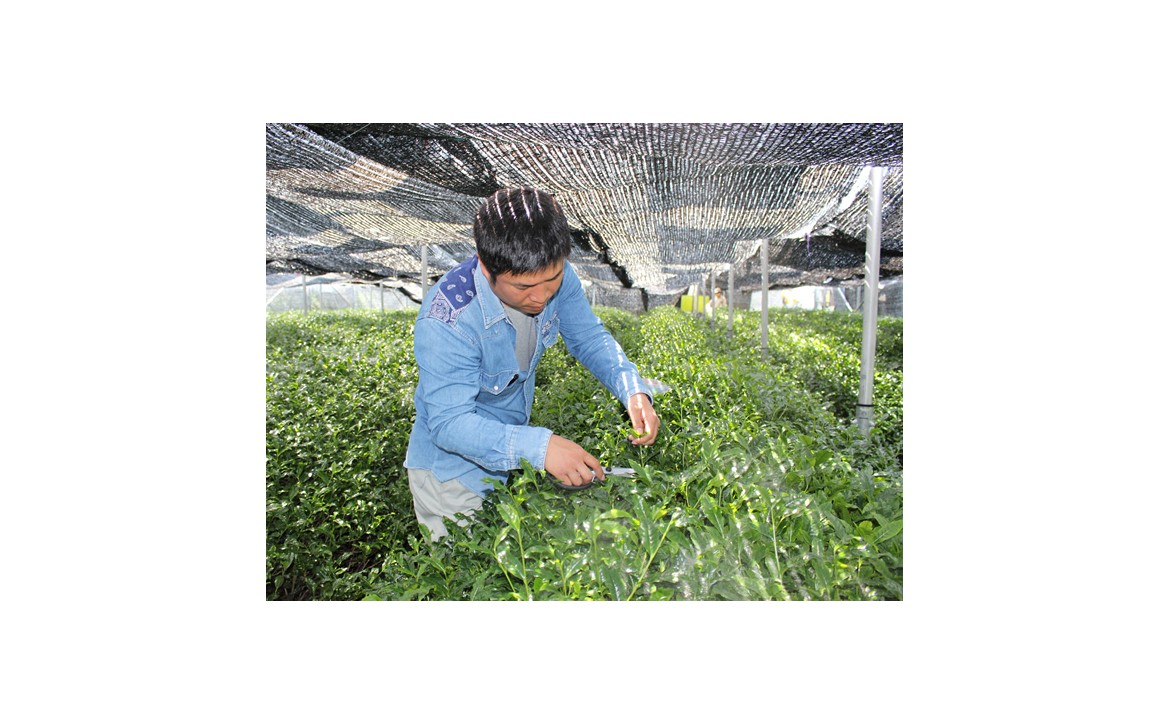
OMACCHAYA’s artisanal tea making in a few words…
OMACCHAYA’s matcha is grown in the heart of the Shizuoka mountains, near Mount Fuji. It is produced using an eight-century- old technique called tana, in which the bushes are shaded by nets, resulting in higher quality leaves. From the growing of the tea and the careful picking of the first shoots in May, to the roasting and drying of the leaves in the tencha-ro oven, and finally, their grinding with granite mill stones, no stage is neglected in order to ensure that this green gold develops and retains its exceptional flavour. Based in Japan, the OMACCHAYA team is able to keep a close eye on the quality of the product (grown without pesticides), the environmentally-friendly production facilities (hybrid farms producing solar energy) and the well-being of the producers (application of fair trade principles).
OMACCHAYA’s Quality Chart
Our approach and what makes our matcha and teas so fine: We belong to a rare community of "Seed to Powder Japanese Tea Makers”. We respect the environment and the work of our community; All our teas are 100% natural and pesticides free. We are based in Japan working hand in hand with our community of farmers; we overlook all the craft steps of the fabrication stages of our products from planting the tea tree seeds into the ground all the way to grinding only 1st harvest tea leaves into very fine powders. Additionally, we pay special care to the design of our packaging and the quality of the papers we use to wrap our products.
Authentic Matcha & Teas making process
Use of high quality tea cultivars (Samidori, Goko, Okumidori, etc.). We only use «ichibancha»’s youngest and freshest leaves. Our tea master designs for us special blends for our signature tastes, but we like to work a lot with single origin tea leaves for their strong and unique aromas and characters. Pesticides free farming to respect the environment and consumers’ health. Our matcha/gyokuro tea trees are grown in the shade during 4 weeks right before harvest in order to gradually block up to 98% of sunlights to stop photosynthesis and nourish the roots with nutriments. The result is that the leaves from these plants produce more chlorophyll and amino acids like l-theanine, resulting in teas with a deep green color and rich, savory almost sweet flavor (known as umami in Japan). Use of the traditional Tencharo (brick furnace) to dry the tea leaves and create exceptional tencha leaves (name of the tea leaves after having undergone the drying process in the tencharo and right before being ground into a fine powder). Use of the traditional Cha-Usu (Stone mill grinding) to produce a super fine and top quality matcha powder.
Environmental care and fair trade with our farmers
Soil analysis & tests every year to keep healthy soil condition. Solar power generating systems on top of the tea plantations using left-over sunlight to create clean energy and provide additional fair-trade revenues to our community of farmers.

All comments